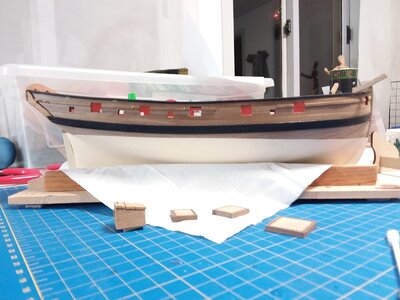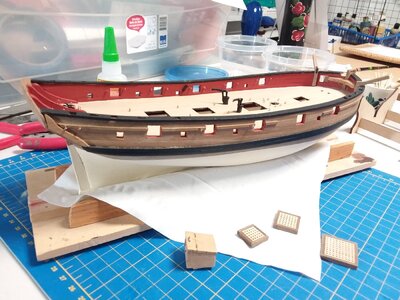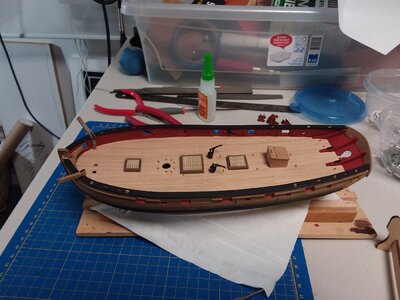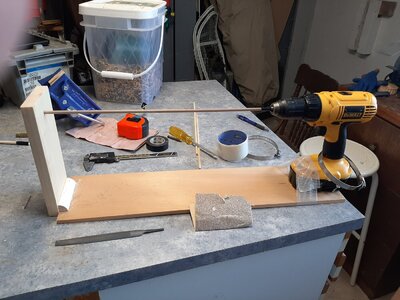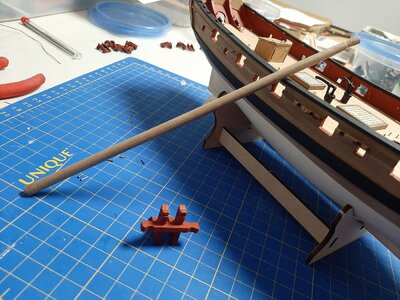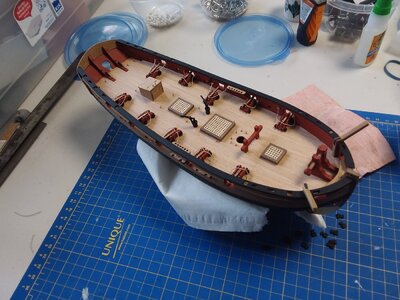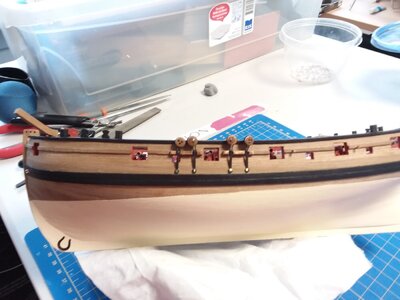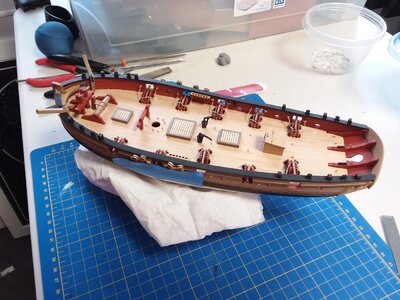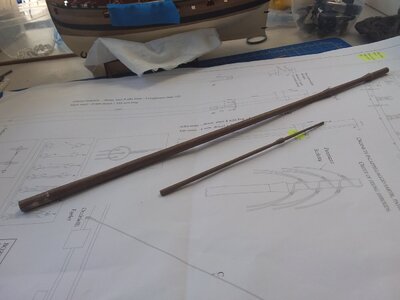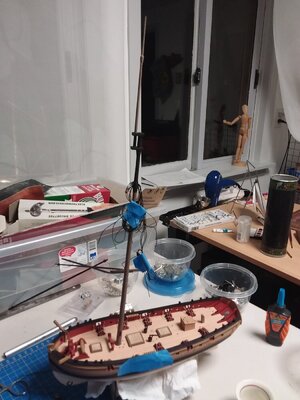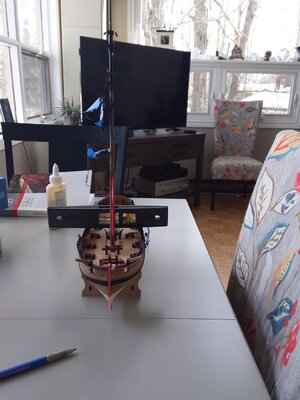But then I see on the cutter drawings of the period that those ports were there. So, they are historically accurate. But why? It's fine, I've worked around the issues at the how, but I'm curious about it.
Anyway, the breasthook has been modified, and the catheads located to suit. I coloured a thin strip of 120# watercolour paper with a black indelible pen and applied one to the top of each cathead at the outside of the 90 degree bend to simulate iron reinforcement bands. Looks good, I think.
Next job is hatch covers. I regret adding the catheads now, when called for in the instructions. I caught one with my hand already and snapped it.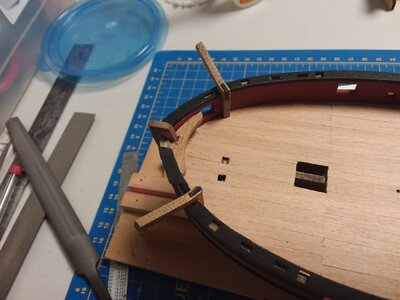

At this point I should be drilling the keel for the brass pedestals, if not before. But since the instructions don't mention how to do it and I didn't reinforce a suitable spot on the false keel to take the screws, I am going to go with a cradle stand I think. Rhe one that came with the ship fits poorly, but I cn easily make a nice one using the bulkhead outlines from the stock sheet as a template and line with felt. It seems like I'd need a #2 woodscrew 2 inches long (sorry metric world, in Canada we are mostly metric but do woodworking in Imperial units)? I just don't think the result would be very robust. The slots in the brass pedestals are too wide and loose and the pedestals are the same height but the keel should be slanted up toward the bow.
Anyway, the breasthook has been modified, and the catheads located to suit. I coloured a thin strip of 120# watercolour paper with a black indelible pen and applied one to the top of each cathead at the outside of the 90 degree bend to simulate iron reinforcement bands. Looks good, I think.
Next job is hatch covers. I regret adding the catheads now, when called for in the instructions. I caught one with my hand already and snapped it.


At this point I should be drilling the keel for the brass pedestals, if not before. But since the instructions don't mention how to do it and I didn't reinforce a suitable spot on the false keel to take the screws, I am going to go with a cradle stand I think. Rhe one that came with the ship fits poorly, but I cn easily make a nice one using the bulkhead outlines from the stock sheet as a template and line with felt. It seems like I'd need a #2 woodscrew 2 inches long (sorry metric world, in Canada we are mostly metric but do woodworking in Imperial units)? I just don't think the result would be very robust. The slots in the brass pedestals are too wide and loose and the pedestals are the same height but the keel should be slanted up toward the bow.
Last edited:




